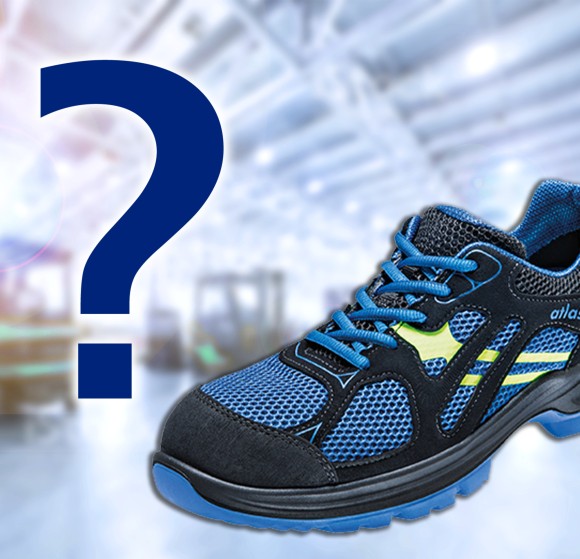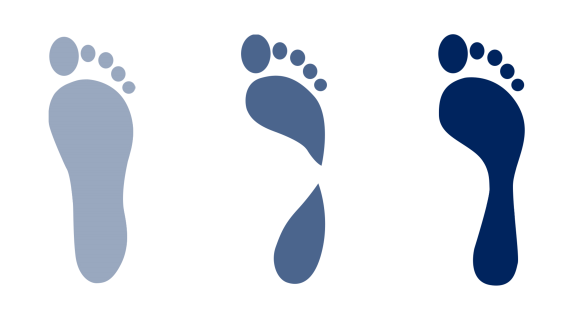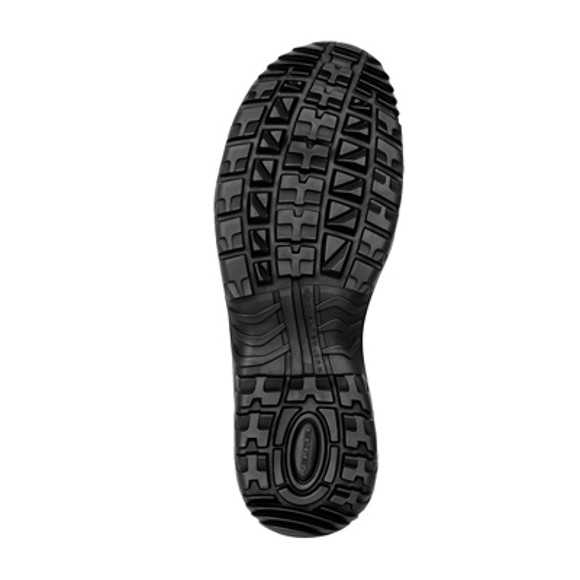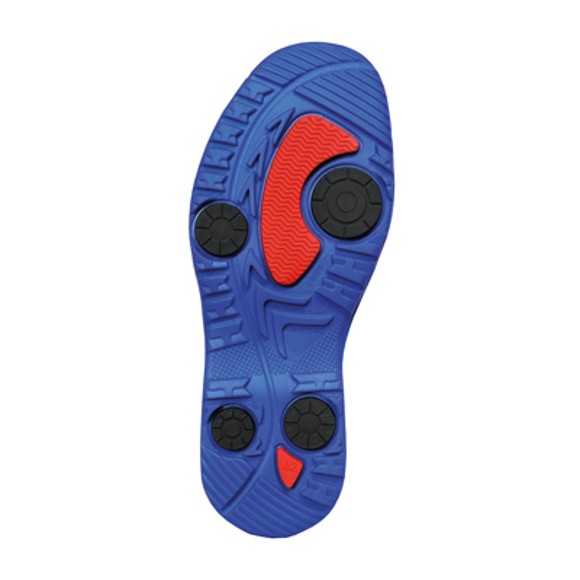
Safety shoes, work shoes, foot protection – Step by step safe in the workplace
Walking, standing, kneeling, working – everyone wants a perfectly fitting, needs-based safety shoe. The safety shoes or work shoes that are worn all day long must not only be comfortable but also fulfill their protective function 100%.
With the safety shoes from HAHN+KOLB, you optimally protect your feet from all hazards. Discover innovative and stylish safety shoes from brands like UVEX, ATLAS, ELTEN, and many more.

What is important when choosing safety shoes?
- Functionality (e.g., metal-free toe cap, meets ESD requirements, ...)
- Lightness (e.g., steel, aluminum, or plastic cap)
- Cushioning (e.g., dual-layer PU sole, cushioning under the heel, ...)
- Breathability (e.g., upper material, lining, ...)
- Flexibility (e.g., metal-free construction, quick lacing, ...)
- Sporty and modern design (e.g., narrow sports shoe shape, ...)
What safety classes are there and what are the differences?
The safety class you need depends largely on the area in which you work and the hazards present in that area. The safety shoes are classified according to EN ISO 20345:2022 into the following safety classes: SB, S1, S1P, S1PL, S1PS, S2, S3, S3L, S3S, S4, S5, S5L, S5S, S6, S7, S7L, and S7S.
The work shoes are divided into the following safety classes according to EN ISO 20347:2022: OB, O1, O2 and O3.
The table below shows which safety class meets which criteria.
x = fulfilled
Basic requirements for safety shoes according to EN ISO 20345:2022 and work shoes to EN ISO 20347:2022
| Symbol | Requirement | Safety Class | ||||||||||||||||||||
| OB | O1 | O2 | O3 | SB | S1 | S1P | S1PL | S1PS | S2 | S3 | S3L | S3S | S4 | S5 | S5L | S5S | S6 | S7 | S7L | S7S | ||
| - | Toe cap energy absorption 200 Joules | X | X | X | X | X | X | X | X | X | X | X | X | X | X | X | X | X | ||||
| - | Closed heel area | X | X | X | X | X | X | X | X | X | X | X | X | X | X | X | X | X | X | X | ||
| - | Slip resistance on ceramic tile floor with sodium lauryl sulfate solution (NaLS) | X | X | X | X | X | X | X | X | X | X | X | X | X | X | X | X | X | X | X | X | X |
| A | Antistatic shoes | X | X | X | X | X | X | X | X | X | X | X | X | X | X | X | X | X | X | X | ||
| E | Energy absorption in the heel area | X | X | X | X | X | X | X | X | X | X | X | X | X | X | X | X | X | X | X | ||
| WPA | Water penetration and water absorption of the upper material | X | X | X | X | X | X | X | X | X | X | X | ||||||||||
| WR | Waterproofness of the entire shoe | X | X | X | X | |||||||||||||||||
| P | Puncture resistance, non-metallic insole, tested with a 4.5 mm test nail | X | X | X | X | X | ||||||||||||||||
| PL | Puncture resistance, non-metallic insole, tested with a 4.5 mm test nail | X | X | X | X | |||||||||||||||||
| PS | Puncture resistance, non-metallic insole, tested with a 3.0 mm test nail | X | X | X | X | |||||||||||||||||
| - | Profile sole | X | X | X | X | X | X | X | X | X | X | |||||||||||
Which types of soles are available and how do they differ?
For the soles of safety shoes and work shoues different materials are used to best suit various work environments. Fundamentally, three types of soles are distinguished:
- Rubber
- Polyurethane (PU)
- Thermoplastic Polyurethane (TPU)
The following table provides an overview of the properties of these three types of soles:
Furthermore, the outsoles differ in whether they are made of one or two layers. But what are the advantages of a single layer? What is the benefit of a single layer when you could have two layers?
The biggest advantage of a single-layer sole is that only one material with low density is injected. This makes the outsole particularly light. The advantage of a two-layer sole is clear: it allows the benefits of two materials to be combined, such as the heat resistance of rubber and the good cushioning of PU.
What should be considered when wearing insoles in my safety shoes?

Insoles can be used in safety shoes, but not just any insole; it must be one that is suitable for the specific safety shoe. Manufacturers offer various insoles (climate comfort insoles, insoles for flat feet, etc.) that are approved for your safety shoes.
For example, an atlas safety shoe can only use an atlas insole, an Elten safety shoe can only use an Elten insole, and so on. If orthopedic insoles are needed in the safety shoe, a safety shoe that is approved for orthopedic insoles according to DGUV (German Statutory Accident Insurance) is required.
How do I know which size fits?
Do you have new employees who have never worn safety shoes, or are you switching brands and unsure of the right size? No problem! We are happy to help! Our field service team will visit your location to carry out a professional foot measurement for all employees, determine the correct size and width, and assess whether any employees need insoles to optimally support the foot. Based on this information, we will be happy to provide you with a customized offer. To schedule an appointment, please contact your HAHN+KOLB representative or send us your inquiry via email.
Request now



